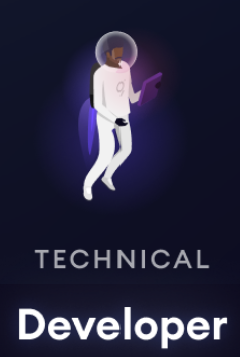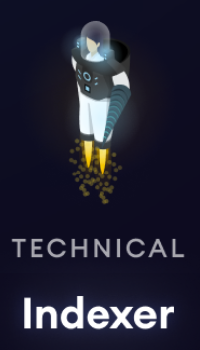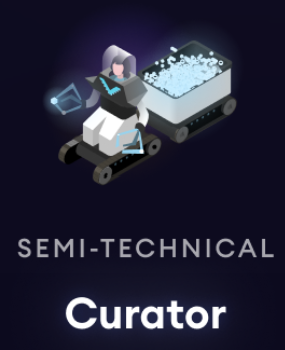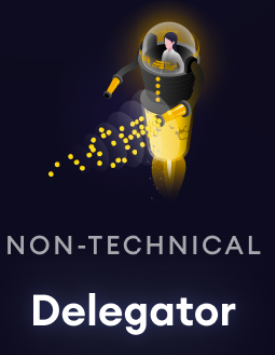The Graph Network Overview
Lesson 2
There are four roles that make up The Graph Network:
The Graph Token
The Graph token is a work token (ERC-20 on Ethereum) used as an economic incentive to ensure the security of The Graph Network and the integrity of the data being queried. The various roles stake and use the token to allocate resources on the network. Indexers, Curators, and Delegators can provide services and earn income from the network based on the amount of work they perform and the amount they have staked.
Developer

Developers are those people building apps and in the case of The Graph, creating/coding the subgraphs that they then publish to the decentralized network or hosting service allowing apps and people to query their APIs (subgraphs).
Indexer

Indexers run Graph Nodes on The Graph Network that stake Graph tokens (GRT) to provide indexing and query processing services. They earn query fees and indexing rewards for their services. They also earn from a Rebate Pool that is shared with all network contributors proportional to their work following the Cobbs-Douglas Production Function.
Indexers rely on curators to signal which subgraphs are worth indexing.
Curator

Curators stake GRT to indicate which subgraphs are high quality and should be prioritized. They use their knowledge of the web3 ecosystem to signal when subgraphs should be indexed. Curators are rewarded when they signal on good quality subgraphs and are rewarded with a share of the query fees that those subgraphs generate. Based on the way rewards are calculated, curators are incentivized to signal early.
Delegator

Delegators help secure the network by staking GRT with indexers. In doing so, indexers earn rewards and query fees payed by data consumers. They then can share a portion of those rewards/fees with the delegators who are staking with them. Delegators choose indexers based on a number of variables including past performance, reward rates, and reputation within the community.
The Data
Using this network of developers, indexers, curators, and delegators, all data indexed from the supported chains is stored and processed on open networks with verifiable integrity. The Graph makes querying that data fast, reliable, and secure.

At this time, only Ethereum is available on The Graph network. The others, including NEAR, have to use the Hosted Service. Eventually the Hosted Service will close down when The Graph network reaches feature parity.
Next Steps
That's it for our overview of The Graph and how it works and now we're going to move into building subgraphs for NEAR on it. If you want to learn more about The Graph, take a look at some of these resources we've assembled for you:
- The Graph Academy - open-source and community-driven knowledge base on The Graph Protocol.
- The Graph Documentation - really good and accessible documentation.
- If you prefer to watch something - this is a good overview from Finematics.
When you're done learning about The Graph - head over to the next lesson where we'll start getting into the nuts and bolts of learning to build subgraphs for NEAR. See you there.
Maybe you'd rather have us build your NEAR subgraph for you?
Not a problem and it can be pretty quick and inexpensive depending on the complexity of your contract. Get in touch using one of the methods below.

